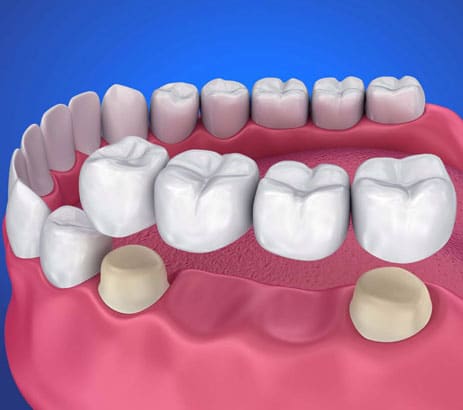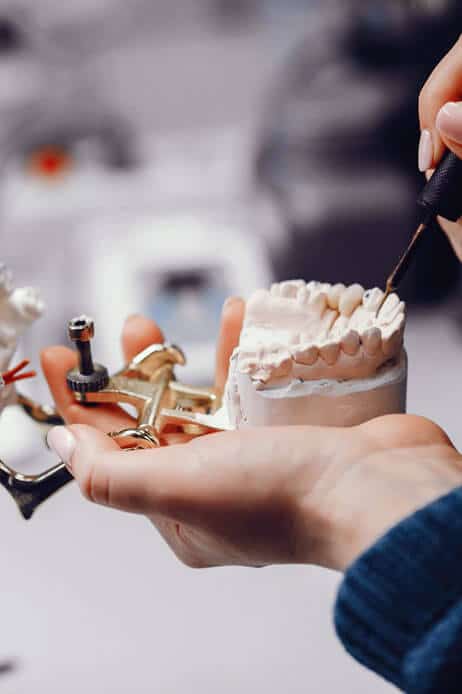
Dental Bridges
All of your teeth play an important role in speaking, chewing, and maintaining proper alignment of other teeth. Tooth loss doesn’t necessarily have to occur as you age, but if you lose teeth, they must be replaced to maintain proper occlusal function. Fortunately, there are options for correcting tooth loss.
Dental Bridge Options
A dental bridge is a device used to replace missing teeth. A bridge attaches artificial teeth to adjacent natural teeth, called abutment teeth. Bridges are usually permanently cemented in place.
If you’re missing one or more teeth, you may be aware of their importance to your appearance and dental health. Your teeth work together for many daily functions, from eating to speaking. With missing teeth, it’s difficult to do these things properly. Missing teeth can and should be replaced. Fixed bridges are a great way to restore your dental health and appearance.
What Exactly Is A Dental Bridge Or Fixed Partial Denture?
A bridge (fixed partial denture) is a device which fills the gap where teeth are absent. Essentially it is 3 or more connected crowns. Fixed bridges are bonded into place and can only be removed by a dental professional. Removable bridges, as the name implies, can be taken out and cleaned. Fixed bridges offer more stability than their removable counterparts.

Why Do I Need A Dental Bridge?
Oral functionality and appearance are important reasons for wearing a bridge. A bridge helps support your lips and cheeks. The loss of a back tooth may cause other teeth to shift, changing your bite.
Dental health is the most important reason for a bridge. Teeth were designed to complement each other. Unusual stresses are placed on the gums and other oral tissues when teeth are missing, causing several potential risks.
Increased risk of gum disease has proven to be one of the worst side effects of missing teeth and can be minimized with a bridge.
Are You Ready to Transform Your Smile?
How Is A Dental Bridge Attached?
The attachment procedure usually takes two appointments. At the first appointment, Dr. Fialkoff will prepare the teeth on either side of the gap by removing a portion of the enamel and dentin.
Since the bridge must be fabricated very precisely to ensure correct bite and to match the opposing tooth, impressions of the teeth are taken and sent to a lab where the bridge will be fabricated.
Fixed bridges are typically cemented to the natural teeth next to the space left by the missing tooth. A pontic (false tooth) replaces the lost tooth. Dental crowns, which are cemented onto the natural teeth, provide support for the bridge.
What Materials Are Used For Dental Bridges?
Bridges can be constructed from similar materials as individual crowns, such as porcelains, zirconia, porcelain fused to gold, or a combination of these materials. Regardless of the material used, you can rest assured you will be happy with the results.
How Do I Take Care Of My Bridge?
A strict regimen of brushing and flossing will keep the bridge and surrounding teeth clean. This is critical as the bridge relies on the neighboring teeth for support. The better you take care of it, the longer your dental bridges will last.


